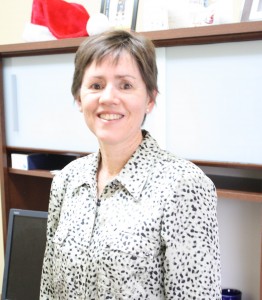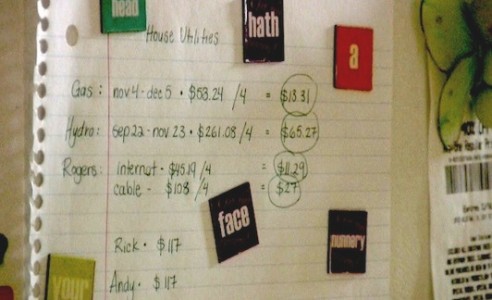Credit counsellor Norah Foster described Rick Kim’s current financial situation as possibly the worst one a young person could be in: mired in student debt but without a degree.

Norah Foster is a credit counsellor at K3C Credit Counselling in Ottawa and works with young people and others who have run in to financial trouble. (Photo: Ora Morison)
Here is how Foster says Kim can improve his situation:
- First, Kim’s main priority should be eliminating whatever non-student debt he can, such as outstanding credit card balances. The student debt is manageable for now because Kim has applied for interest-free status through the federal Repayment Assistance Program, but all other debt that will incur interest must go, even if it means Kim reduces his saving in the short term.
- Typically, Foster says a person should aim to save about 10 per cent of their income. For Kim, that would be $150 each month. “But a lot of students realistically don’t have a lot of money for savings,” Foster says. She recommends Kim save less than that – even as little as $20 or $40 per month – for the time being, while he focuses on paying down any credit card debt he has.
- If Kim ever wants to return to university to complete his degree or enroll in a college program, his first priority should be paying the $5200 outstanding balance on his student account at the University of Waterloo. “He would not be able to go back to another university until that amount is paid,” Foster says. The university will bar Kim access to his grades and transcripts until his account returns to good standing.
- Eliminating all non-essential expenses is important for Kim too, Foster says. For example, choosing only a basic cell phone plan will save money each month that Kim can put toward paying off debt.
- Next, Kim should look for a way to return to school without racking up too much more student debt. “Would it be possible to go back on a part time basis?” Foster suggests. This way, the cost of tuition would be lower, and Kim might be able to work part-time to support himself while in school.
- Unless Kim’s income rises drastically, Foster recommends he continue his interest-free status through the student loan Repayment Assistance Program. This requires filing forms on a regular basis to show continued inability to repay his loans, and Foster cautions against falling behind on the paper work. If a person misses the deadline to re-apply for the program, they will be charged interest right away. “They have to pay off interest before they can be eligible for RAP [again],” Foster says.
- After all his interest-bearing debt is repaid, Foster says Kim should put whatever money he can toward “a small savings for an emergency.”
The federal Repayment Assistance Program helps graduates who are having difficulty repaying their loans. Graduates who are eligible will not be asked to make loan payments that are more than 20 per cent of their gross family income, or be given a repayment period of longer than 15 years. In some cases, the government will cover interest on the loans while the graduate pays toward the principal amount.
- More than 160,000 borrowers used the Repayment Assistance Program in 2009-2010.
- This marked an increase of about 27,000 people compared to the previous year, when changes were made to allow more borrowers to be eligible for the RAP.




